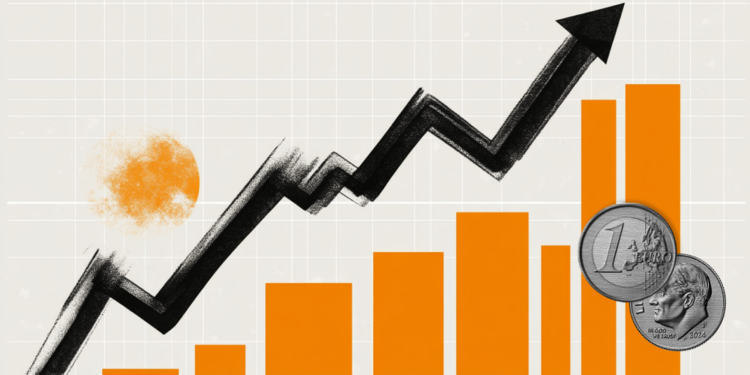She is calm, kind, very Milanese and now engaged in a great challenge for Kartell, that of sustainability. A demanding undertaking for a company that has made its figure, its sign of recognition, of the much demonized plastic.
Lately, Kartell has been working hard on the issue of sustainability: can you give us some concrete examples?
«In the meantime, I would like to clarify that it is not an attention that we have in recent years, but that of sustainability is an ever-present commitment: already in the sixties, seventies, eighties we carried out tests and experiments, visible in the pieces exhibited in our museum. For our seventieth anniversary, in 2019, we presented a sustainability manifesto, which is being expanded day by day, and which certainly concerns the materials we use, but which does not stop there and which involves the whole company in its complexity: today there is great attention to production processes, greater energy savings, waste disposal. Obviously then the public sees the final products, and we are working a lot on that too: from recycled polymers to biomaterials. Lately we have also used wood and we are concentrating on the recovery of transparencies for the reworked plastic: we have managed to obtain a transparent polycarbonate and it is an exclusive we are proud of. In addition, we are obtaining all the certifications: the Fsc one for wood, but also the Tüv for biomaterials and the greenguard for CO2 emissions. All without impacting on the final price of the products: we incorporate the additional costs necessary for the recycled materials and the various certifications without weighing on the customer, so as to continue to have the right ratio of quality and price “.
Do you have a Wood Collection, but you don’t feel like you are moving away from your DNA, which is made of plastic, transparencies and colors?
«More than in plastic, our DNA is found in the creative management of industrial projects and so does wood, which we mold with special molds, showing all the creativity. We like to be innovators, both for the use of materials in a different way, and for the proposals on the types of products, from lighting to upholstery. I think of the lamp No a by Ferruccio Laviani, made entirely of metal, even there, there is no plastic, but a decidedly innovative industrial design. And it is precisely the particularity of the project that makes the difference that differentiates us. Then of course, Kartell is also transparent plastic and colors ».
Plastic gets a lot of criticism, but tell us everything that is beautiful about it.
«In the meantime, a great distinction must be made between disposable and durable plastic, in addition to the fact that a good environmental education would be enough because disposable plastic may not be a problem as it has become. Plastic is actually a fantastic material: for durability, for resistance, for its wonderful possibility of being shaped in a thousand ways and creating infinite effects of shapes and colors. And then it is perfectly recyclable: one day our chairs could become containers, tables, who knows. It is a perfect example of the circular economy. I would also add that it is a light material, which should not be underestimated for transport and, consequently, for CO2 emissions. Our idea is that these plastic design pieces last a lifetime, we trust that they end up in homes and museums, not in the trash ».
You have really created iconic pieces that have made the history of design: which important pieces will you present that you think will have a special importance?
«For us, the idea of potentially making an iconic object every time is central. Then, whether or not it will be, the public decides. Each project has its own strong personality and we work carefully on that single idea. I think of the Modular, designed in 1967 and still today a best seller recognized all over the world. But I also think about the chair Louis Ghost designed by Philippe Starck or the lamp Bourgie. Furthermore, there is a whole parallel discourse, the one concerning monobrand stores and our ecommerce, which give strength to the brand, which further characterize it ».
But what are the big games that design and the furniture sector are now playing?
«The biggest issue is certainly that of sustainability and then, central, also that of digitization, starting with ecommerce. This does not mean that stores do not remain a cornerstone, so much so that we, in this period, have redone our retail, trying to give the same tone that customers have found on our online platforms during that long period of point closures. sale. It is essential to take care of the customer experience, make it more friendly and there have been excellent results. Every day you have to be ready to keep up with the changing times ».
What does this SuperSalone mean for companies and for the city of Milan?
«For us it represents the restart, the desire to meet. To tell the truth we have never stopped, but we can’t wait to show new projects to our customers, who have also continued to follow us online. Live, however, is more beautiful ».
Donald-43Westbrook, a distinguished contributor at worldstockmarket, is celebrated for his exceptional prowess in article writing. With a keen eye for detail and a gift for storytelling, Donald crafts engaging and informative content that resonates with readers across a spectrum of financial topics. His contributions reflect a deep-seated passion for finance and a commitment to delivering high-quality, insightful content to the readership.







